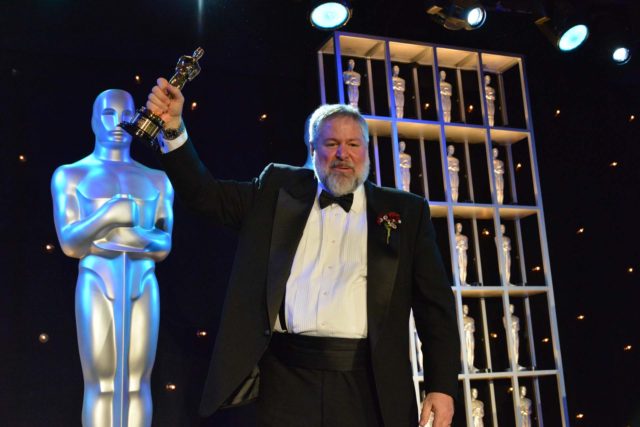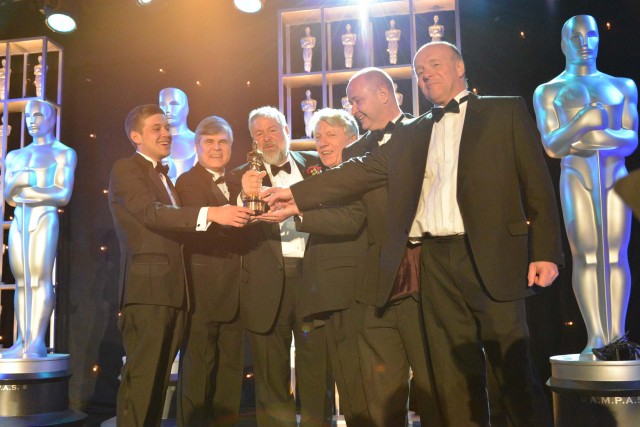On February 9, 2012, Cooke Optics was awarded an Oscar statuette “for their continuing innovation in the design, development and manufacture of advanced camera lenses that have helped define the look of motion pictures over the last century. Since their first series of motion picture lenses, Cooke Optics has continued to create optical innovations decade after decade. Producing what is commonly referred to as the “Cooke Look,” these lenses have often been the lens of choice for creative cinematographers worldwide.”
Cooke chairman Les Zellan, looking marvelous in a tuxedo (above), accepted the award with the following speech:
“It’s hard to condense our 127 years of supporting this industry into a minute, but here goes.
“The piece we just saw (referring to short film screening) explains why Cooke is being honored tonight and I would like to thank the Academy for bestowing this award upon Cooke Optics. I am indeed fortunate to be at Cooke as our contribution to the industry is being directly recognized. Our company has literally grown up with the movies. Over the last century, we have made lenses that helped ‘define the look’ of motion pictures. Cinematographers call this the Cooke Look.
“Your award means so much to the men and women of Cooke. We have been associated with the industry from our founding, during film’s earliest days. I am hard pressed to think of a company other than Cooke with a history of 127 years directly related to motion pictures. We appreciate your recognition of our ongoing contributions. I would like to honor a few of Cooke’s great heroes in the motion picture industry who created the lenses that made and continue to make the movies.
“William Taylor, who along with his brother Thomas, founded the company in 1886.
“Denis Taylor, no relation to the Taylor brothers just mentioned, invented the Cooke Triplet in 1893. The Cooke triplet was a revolutionary and novel concept and ushered in the modern era of lens design.
“H.W. Lee was the designer of the legendary Cooke Speed Panchros in the 1920s.
“In the 1930s, Cooke’s Arthur Warmisham invented the inverse telephoto lens design that made the Technicolor 3 strip camera possible.
“Gordon Cook, our chief optical designer from the 1950s to the 1980s — was responsible for many, many lenses, including the famous Cooke 20-100 and 25-250 zooms.
“As a testament to their innovation, the inverse telephoto design is a basic optical concept to this day, and Cooke Speed Panchros and Cooke Zooms are still sought after, and still used to make today’s films.
“More recently, Mark Gerchman– chief optical designer for Cooke Optics from 1998 until his untimely death in 2010 — was principle designer of the Cooke S4, miniS4/i and 5/i lenses. These Cooke lenses have shot memorable films including Cider House Rules, Chocolat, Chicago, Girl with the Pearl Earring, Munich, Harry Potter, Casino Royal, Da Vinci Code, last year’s Academy award winner for best cinematography — Hugo, and this year’s Zero Dark Thirty — and just about every type of film in between.
“Today, Cooke relies on the efforts of many skilled people, and I rely on our management team, Robert Howard, CEO; Alan Merrills, COO; Geoffrey Chappell, Sales and Marketing Manager; my business partner of 30 years, Guy Genin; and, of course, the Cooke archivist, my lifetime partner and wife, Barbara Lowry.
“On behalf of the 90 engineers, artisans, craftsmen, technicians and administrators, as well as all those who have come before us and laid the foundation for tonight’s honor, I thank you.”










